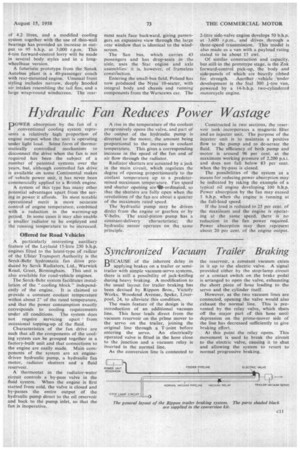Synchronized Vacuum Trailer Braking
Page 49

If you've noticed an error in this article please click here to report it so we can fix it.
BECAUSE of the inherent delay in applying brakes on a trailer or semitrailer with simple vacuum-servo systems, there is still a possibility of jack-knifing during heavy braking. A modification to the usual layout for trailer braking has been devised by Rippon Bros., Victory Works, Woodend Avenue, Spcke, Liverpool, 24, to alleviate this condition.
The main feature of the design is the introduction of an additional vacuum line. This hose leads direct from the vacuum reservoir on the prime mover to the servo on the trailer, joining the original line through a T-joint before entering the servo. An electrically operated valve is fitted in the hose close to the junction and a vacuum relay is inserted in the normal line.
As the conversion line is connected to
the reservoir, a constant vacuum exists in it up to the electric valve. A signal provided either by the stop-lamp circuit or a contact switch on the brake pedal is arranged to open the valve, exhausting the short piece of hose leading to the servo and the cylinder itself.
However, as the two vacuum lines are connected, opening the valve would also exhaust the normal line. This is prevented by the relay valve, which shuts off the major part of this hose until depression on the prime-mover side of the line has decreased sufficiently to give braking effort.
At this point the relay opens. This movement is used to break the circuit to the electric valve, causing it to shut and allowing the system to revert to normal progressive braking.












































































































